Do you have a SHTF plan for dealing with trash? If not, you should. On any given day, the average American can generate about four pounds of trash.
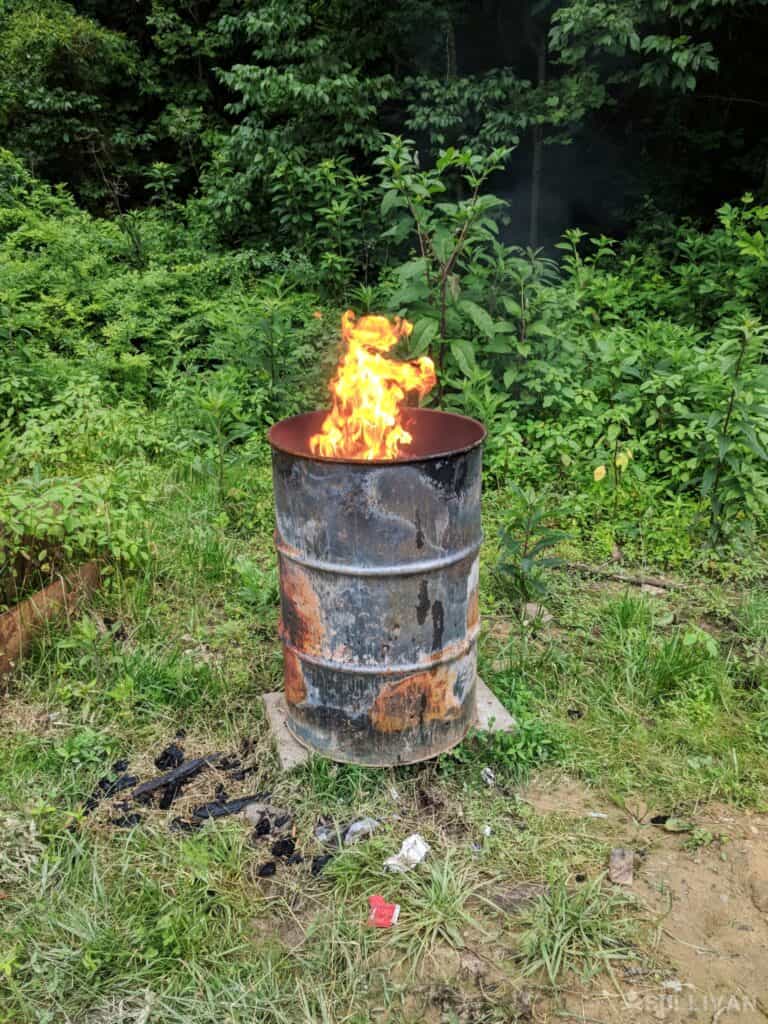
Your trash, or more importantly the bacteria it grows and rodents it attracts, can kill you. Concerns about another coming of the plague due to mounds of trash and raw sewage are very real, folks.
During a long-term disaster, we will not be creating as much trash because no longer will wrappers and containers of store-bought items be coming into our homes.
Store shelves will empty just a few hours after the SHTF, leaving only the packaging of stored preps to be disposed of at the bug in location or survival homesteading retreat.
Still, the trash that is created must have somewhere to go – and quickly. Bagged trash left outdoors will attract rodents that spread disease and a host of predators. Even if you do not live in a rural area, predators common “out in the country” will be finding their way into both the suburbs and cities during a long-term disaster.
If you’ll be eating your meals on paper plates during an SHTF event, the food residue on them will harken bugs, stinging insects, rodents, and both wild and domestic animals near your home in less than a day.
Manufactured food cans, unless they are rinsed out thoroughly, will attract pests and predators, as well. These cans, and other common household non-burnables, must be disposed of promptly.
Table of Contents
Trash Pile Burdens
During either short-term disasters, like Hurricane Sandy or Hurricane Katrina, and garbage strikes over the years, mountains of trash piled up. In 2007, Waste Management Incorporated, one of the largest sanitation service providers in the nation, locked out almost 500 California workers for three weeks during a labor dispute.
In that short amount of time, so many stacks of trash bags piled up on the streets that parents believed it was unhealthy and unsafe for their children to even go outdoors.
In the aftermath of Hurricane Katrina in 2005, approximately 22 million tons of trash piled up across the Gulf Coast states.
Trash piles will blow and spread far beyond the confines of the dumping area, including into waterways. Air and ground contamination could likely occur, as well, depending upon what was placed in the garbage.
When unsanitary conditions increase in both volume and exposure time, rats and the human-biting fleas that live upon them, will come calling. Human beings bitten by such fleas ultimately led to the plague and the deaths of approximately 25 million people.
Safe And Sanitary Ways To Get Rid Of Trash
There are five tried and true ways to deal with trash problems during a SHTF event, or simply when living off grid.
Method #1: Burn It
I have read multiple articles about burning trash, nearly all of which had to have been written by someone who had never actually struck a match against a burn barrel to get rid of a bag of trash. I found all such articles to be nothing more than useless drivel that surely would leave a newbie trash burner baffled.
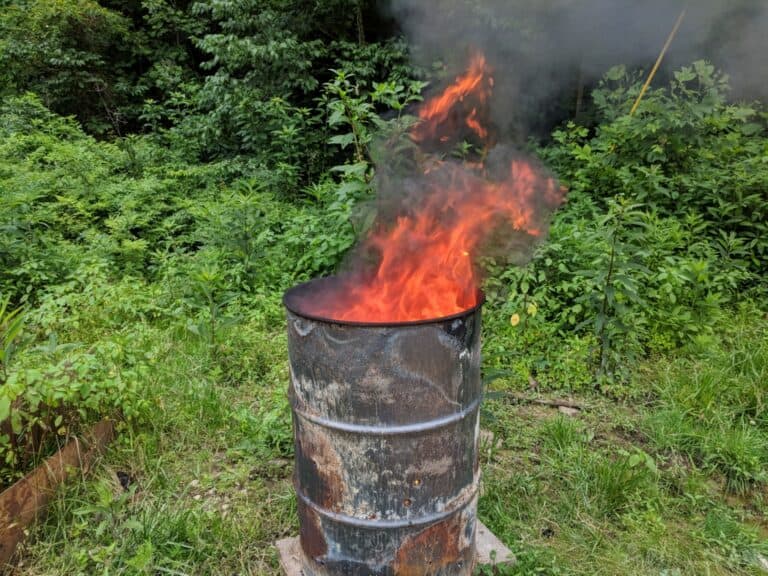
The list of items these useless articles said could not or should not be burnt in a metal 55-gallon drum nearly outnumbered those that could.
It is time to infuse some common sense into the burn or not to burn list of common trash items for urban and suburban preppers who likely stumbled across the same top search result articles I did, and did not grow up with trash burning as a weekly chore.
To Burn Or Not To Burn
Plastic
Plastics are on the non-burn list in multiple trash-burning articles geared towards preppers. Now, before the SHTF, we recycle or reuse all of our plastic. I use as little plastic as possible because I do not like all of the chemicals that go into its production.
But, during a long-term disaster, any plastic that cannot be repurposed will go directly into the burn barrel or burn pit.
There are many ways plastic water or pop bottles or food containers could be repurposed around a survival homesteading retreat or any bugin location that would keep them out of the burn barrel – as long as they are washed to avoid drawing pests or disease.
Treated Wood
While it would never be wise to burn treated wood in your fireplace or wood-burning stove, or to cook a meal over it, tossing this type of wood into your burn barrel happens all the time in rural areas.
Treated or composite wood is often used in campfires that are strictly for warming and not cooking purposes. Even small pieces of scrap wood will come in handy during a long-term disaster, and during the rebuilding stage that will follow for survivors.
Consider sorting your scrap wood and creating a small lumber yard for future use instead of burning anything remotely usable in the future.
Clothing ‘Contamination’
This is the one part of SHTF trash-burning “warnings” that made me laugh right out loud. More than one article warned readers that burning trash would “contaminate” clothing hanging on a clothesline.
Seriously? I will just address this bit of lunacy by stating that the clothing you are wearing when burning trash, as well as the items hanging on a clothesline, will be just fine.
SHTF Trash Burning Tips
Observing sight and smell discipline will be a concern when burning trash, just as it will when you do any type of outdoor cooking.
Never burn tires; the thick black smoke they create can be seen for miles. Instead, use the tires as planters in your survival garden, turn them into outdoor furniture, or playground building materials for the children in your tribe.
Fumes created by any fuel you opt to use as an accelerant, or which exists as residue inside of containers you are burning can also waft a long distance.
Instead of wasting your precious stockpile of fuel on trash-burning chores, use wood chips, branches, or small logs to get a solid fire started (just as you would when building a campfire) instead of more powerful accelerants that carry a significant smell, and are more likely to rage out of control with even a slight shift of wind.
Burn small amounts of trash at one time to avoid garnering a large plume of smoke that will attract unwanted attention.
For OPSEC reasons, it is best to burn during the very early morning hours as the sun comes up and fewer people will likely be out and about – unless they are traveling the roads on foot or horseback and are trying to beat the heat during the summer months.
You will not be able to call the fire department during a long-term disaster. Brush fires can (and often due) rage out of control quickly. Burning during dry conditions means a single hot ember from a burn barrel or burn pit could spark a fire that wipes out your home, the woods you use for hunting, and basically everything in the vicinity.
The EPA seems to loathe burning. Shocker, right? The government agency deems the burning of trash “harmful” to both health and the environment. EPA research claims to indicate that burning trash cans increases the risks of headaches, heart disease, and respiratory problems, and causes both nausea and rashes.
I find it completely ironic that the EPA claims burning trash causes the release of harmful dioxins that “settle” on crops and waterways and can in turn cause health problems.
Crops are grown in rural areas, where the burning of trash happens on a daily basis across the country. Unless the food you are eating was raised or grown in some indoor factory farm environment, it has already been exposed to the burning of routine household trash.
The EPA seems fine with trash being burnt by government-approved incinerators operated by municipalities because they have “stringent pollution control systems”, just not folks taking care of this simple chore on their own.
Admittedly, a municipal incinerator will burn far hotter and be more self-contained than a backyard burn barrel. But, most of us have plenty of money to buy a few burn barrels and use them responsibly, and not enough cash to build a mini version of a city incinerator to use when the SHTF.
Method #2: Bury It
Making a private landfill on your property might not sound like a pleasant idea, but it may very well become absolutely – as could the safe disposal of human bodies.
Using lime to deter rodents, stop the spread of disease, and to kill the smell of decaying organic items will secure your burn pit and keep it more sanitary. Although I have read otherwise in some of the same articles I referenced above, using agricultural-grade lime should not be problematic.
There are multiple different types of lime. Agricultural grade lime is inexpensive and can be found at nearly all farm supply stores like Rural King and Tractor Supply. This type of lime has long been used to line baseball diamonds and to treat the floors of chicken coops.
Trash Burying Tips
Dig the trash pit far away from any water source – both natural ones and wells. This should greatly reduce possible contamination from any oils, medical waste, or mechanical fluids that have to be disposed of.
You could use concrete to encase a burn pit to help reduce the chances of any possible contaminants from leaching into the soil.
Digging multiple trash pits in advance so you have the aid of heavy equipment to do the work for you and to get the pit deep enough to hold a year of trash, is highly recommended.
But, leaving a deep open pit on your property does pose safety issues for people, pets, and livestock. Establish a sturdy fence of wire or wood around the pit to prevent accidents.
The depth and width of a trash pit will depend on several factors, one of the most important being how much space you have to work with at your bug in location or survival retreat.
You also must consider what is located near the pit and how you will work around both the pit, the dirt you saved to cover it either in layers or when it is full, and how the loss of space will impact your overall survival plan.
Save any usable pieces of metal, tin, aluminum, and glass for future projects to avoid having them take up space in the pit. Remember, the metal will rust and could also cause waterway and soil problems on your property.
Glass often works its way to the surface over time, especially if the ground is soft and prone to flooding – or at least turning itself into a mudbug on a seasonal basis.
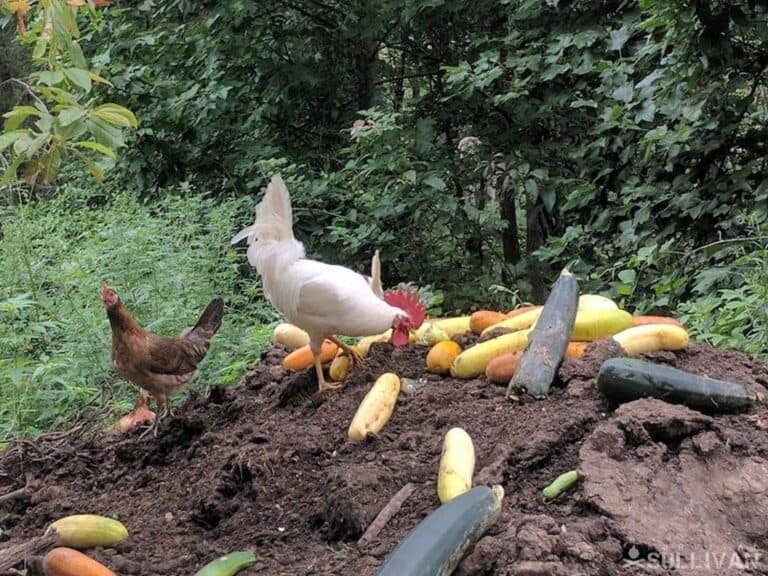
Method #3: Compost It
There is no reason to burn or bury any organic or natural material that could be used to churn out quality soil. If you keep hogs or chickens as part of your survival plan, the food scraps should be shifted to their pen – coop, as long as it is safe for them to eat. The dirt inside the hog pen and chicken coop could itself be considered a quality compost pile.
Non-food items that are considered garbage and could go to the compost pile instead of the burn barrel or trash pit include:
| Cardboard | Coffee Filters |
| Hair | Paper Towels |
| Napkins | Coffee Grounds |
| Tea Bags | Paper Bags |
| Paper Plates | Fabric made of natural fibers |
| Cotton balls and cotton swabs | Cork |
| Rope made of natural materials |
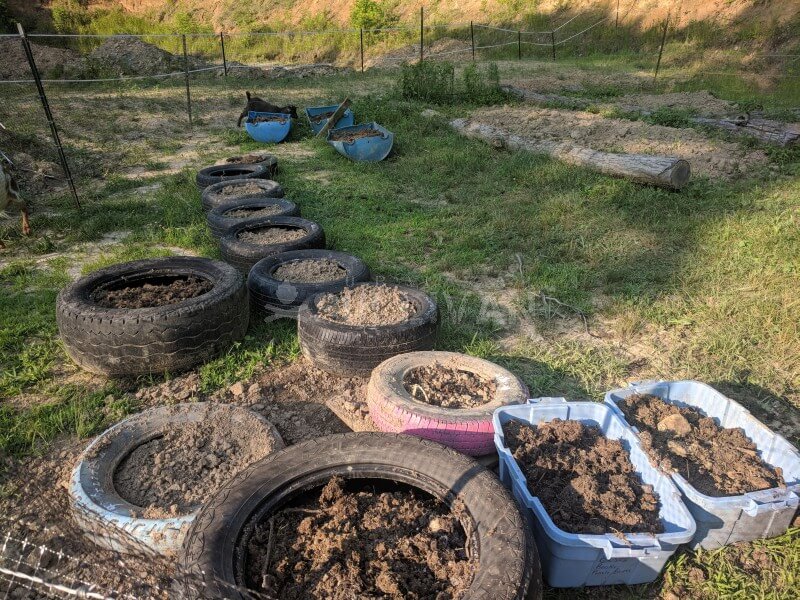
Method #4: Upcycle It
As both a prepper and a homesteader, I re-use and repurpose so many items others would consider trash. My husband is so proud of his junk pile – it holds many scrap treasures that I love to go “shopping” in any time I embark on a prepper retreat enhancement or crafting project.
We all know ordering items online or running out to the store will not be an option during a disaster – or perhaps for many years after it occurs. Learning how to use the items we have on hand in as many off-label ways as possible is a superb self-reliant habit to get into – creating far less trash to deal with in the process.
Trash to Treasure Tips
- Save plastic jugs to use for planting crops, herbs, and medicinal plants and to tote water during a SHTF event.
- Fill plastic jugs with water and freeze them to create an off-the-grid ice house.
- Salvage old, outgrown, and slightly damaged clothing to use as sewing fabric, cleaning rags, and bandages – if it is made out of natural material.
- Milk, juice, and egg cartons can be turned into growing containers or homeschool project items, storage containers, and more.
- Save the soles off of footwear that has been damaged or outgrown to repair other shoes and boots.
- Gently wash aluminum foil and plastic storage bags and allow them to air dry thoroughly so they can be used at least one more time.
- Cut apart leather footwear that has been damaged or outgrown, and use it to repair tack, make storage bags, patch other shoes, etc.
- Plastic sacks can be cut into strips and weaved together to make rope or baskets.
- Squeezable ketchup, mustard, and dressing bottles can make themselves useful as squirt bottles for homemade cleaning supplies, liquid home remedy holder for both the family and livestock, and be used to delight the kiddos when housing DIY bubbles and craft paint mixes.
- Bread wrappers make great lightweight wire pieces that can be used for a myriad or repairs or craft projects.
- Plastic coffee containers can be turned into watering jugs or seed spreaders by poking holes in the lid – or growing containers.
- Plastic jars with a screw on lid can become food storage or small hardware storage containers.
- Oatmeal containers can be used to store a whole host of items, can be decorated and used as tabletop decor/storage, and can be turned into homeschool sorting and materials containers.
- Tires make great planters, hen dirt baths, playground climbing and tunnel structures, and can even be turned into storage ottomans and furniture quite easily.
- Plastic water or pop bottles can be turned into a set of vertical growing containers for herbs or shallow plants. They can also be duct taped together and used as the basis for a float or dock. Paint the bottles black, and fill them with water before affixing them together to make a low-tech version of a solar heater. Fill the bottles with sand, dirt, or stones, and use them to build a fence, a hunting blind (after painting) or even a storage shed. Fill the bottles with a 2 to 1 ratio of salt and water, and float them in your pond, creek, or livestock waterers to prevent the water from turning to ice during the winter months.
- Plastic pill bottles can be used to store foraged nuts, dried flowers and herbs, or seeds.
- Save livestock and domestic pet feed sacks to be used as grow bags for potatoes and other root crops, or turn them into vertical growing sacks. The feed bags can also be filled with dirt or sand, and be used as a flood or other danger, barrier, once you sew the open end back together.
These are just a few examples of the ways to use empty containers that stockpiled preps will arrive in and typical household items destined for the burn pit. If you have some clever ideas to prevent empty or old items from becoming trash, please share them in our comments section below.
Make Less Of
This may seem like a simplistic piece of advice, but actually will involve a good bit of thought. We need to become far more vigilant about the amount and type of trash our preps will leave us with now, before disaster strikes.
How many stacks of paper plates, cups, and bowls do you have in your prepper storage areas? These one time use items, are will make eating and clean up a whole lot quicker and easier, but leave food stained trash to deal with – as will plastic forks, spoons, and knives.
Purchasing durable dinnerware or camping dinnerware and eating utensils will take up less space and leave you with no trash that will need to be disposed of, or attract pests.
Focus on stockpiling dual use items – like distilled white vinegar, for example. It can be used for canning, as a cleaning disinfectant, home remedy base ingredient, and to wash dinnerware. Because the container the vinegar comes in can be re-purposed in so many valuable ways, it definitely belongs on a “perfect preps” list.
The more you grow, raise, and preserve your own food, the less packaging waste you will have to deal with from store bought items. Glass canning jars and rings can be used over and over again.
The one-time use lids can have a hole poked through them that a string is threaded through. The stringed lids can be used in the garden to scare away pests and as part of a no-tech covert perimeter picket line fence system.
Think both small and large about the amount of trash the items you purchase will create to reduce the burden of disposal later on. Stockpile pencils instead of pens so when the writing utensil is all gone, almost no trash will remain.
Can you think of more ways to recycle and repurpose trash? Let us know in the comments below, and be sure to pin this article for later on your favorite Pinterest board.
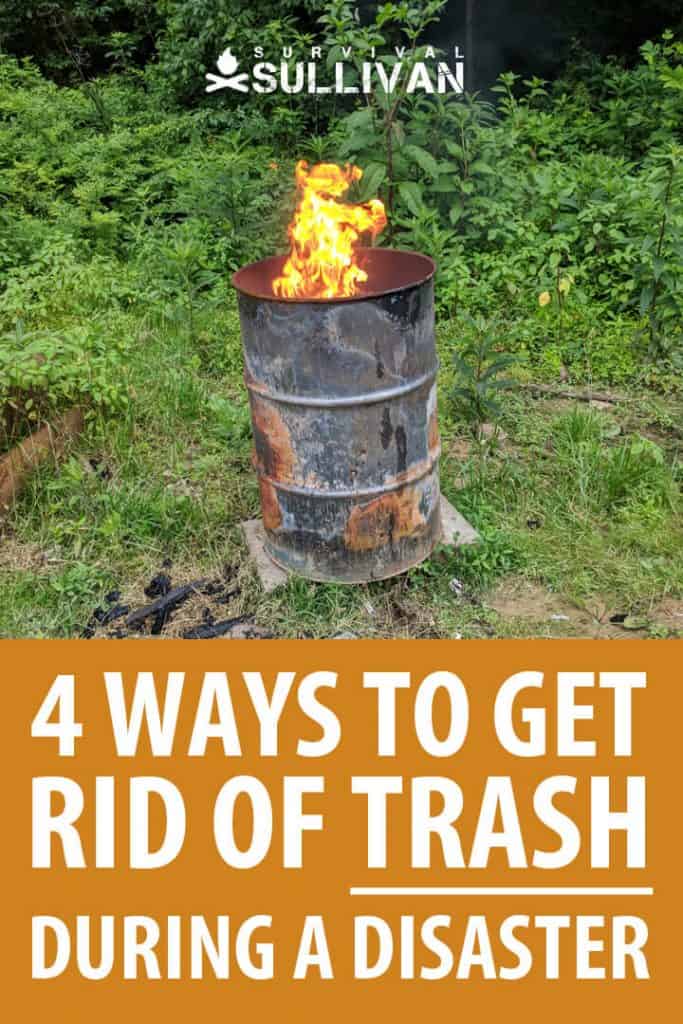

Tara Dodrill is a homesteading and survival journalist and author. She lives on a small ranch with her family in Appalachia. She has been both a host and frequent guest on preparedness radio shows. In addition to the publication of her first book, ‘Power Grid Down: How to Prepare, Survive, and Thrive after the Lights go Out’, Dodrill also travels to offer prepping tips and hands-on training and survival camps and expos.

We never paid much attention to trash when we lived in the city. It disappeared into big trucks.
Then a few years ago we bought a cottage property that was half hour from the closest stores & 25 minutes from the dump, er, landfill. We attended a council meeting & the main topic was the dump filling up too quickly. The township was barely 400 people in winter, but 4,000 in summer. After that, we paid a lot more attention to what we brought up, bought there, and how we sorted our recyclables. In Ontario we have a deposit on all beer & liquor bottles and cans. At the dump we had a dumpster for containers, glass & plastic. We also had a dumpster for fabric, being paper, cardboard, clothing etc. And smaller bins for electronics, used oil, etc.
Now the dump has fees for dropping off discarded refrigerators, tires, boats ($2 per foot). Cars are no longer accepted as are more & more categories every year. When you are forced to have that intimate relationship with your trash you become either a good steward of Earth or you remain an unthinking slob.
Reduce, reuse, repurpose, compost, be resourceful. You will have much less to dispose of.
one of the VERY most important reasons to be concerned about trash disposal is OPSEC >>>> during a serious SHTF where food is at a premium trashpicking will become a fulltime occupation – the last thing you want is the desperate & frantic refugee crowd finding the telltale signs of your prepping – secondary is that very same bunch seeing you dispose of it at a burial pit or fire barrel …
OPSEC always …..
Our ‘burn barrel’ is used to burn sensitive mail like bank accounts – medical billing and such. The roll of metal fencing allows plenty of air flow but still requires periodic stirring for all materials to be consumed.
Years back, an article on off-grid refrigeration mentioned a small energy efficient chest freezer was the sole electric appliance. They froze plastic drink containers in it and rotated them tor inserting into camp coolers for their refrigeration storage. These camp coolers also had exterior wrapping for further insulation,
I would highly recommend that preppers forego the burn barrel (usually a 55-gallon drum) and go ahead and turn it into an incinerator. Or build one of the other types from the various plans on the internet.
A burn barrel does not burn things all that well, and leaves behind a great deal of very disgusting esidue that must be handled. If allowed to accumulate, and the location is subject to much rain, that residue will absorb the rain, and rapidly increase the rusting and deterioration of the barrel or drum, as well as usually leak a really nasty liquid into the ground around the burn barrel.
Incinerators, on the other hand, burn much hotter, more fully combusting anything burned within them. There is far less ash and residue build up, and if properly constructed will have some means of preventing water from entering the combustion area. There will be a ash and residue clean out so that residue can be easily disposed of in a safe location.
Just my very strong suggestion and opinion.